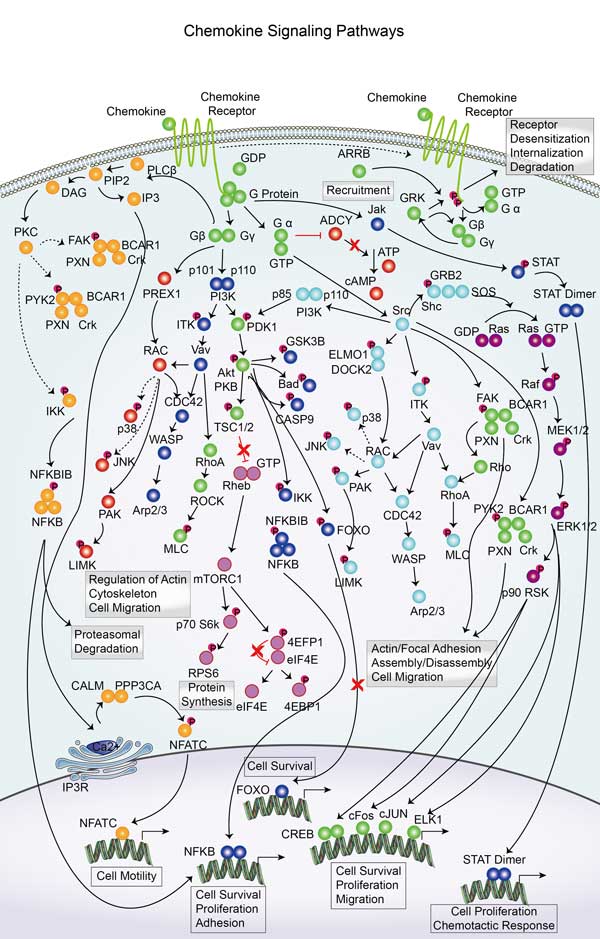ADCY6
-
Official Full Name
adenylate cyclase 6 -
Overview
This gene encodes adenylate cyclase 6, which is a membrane-associated enzyme and catalyzes the formation of the secondary messenger cyclic adenosine monophosphate (cAMP). The expression of this gene is found in normal thyroid and brain tissues, as well as some tumors; and its expression is significantly higher in one hyperfunctioning thyroid tumor than in normal thyroid tissue. Alternative splicing generates 2 transcript variants. -
Synonyms
ADCY6;adenylate cyclase 6;adenylate cyclase type 6;AC6;ACVI;ADCY 6;ADCYB;Adenylate cyclase type VI;ATP pyrophosphate lyase 6;Ca(2+) inhibitable adenylyl cyclase;DKFZp779F075;EC 4.6.1.1;KIAA0422;adenylyl cyclase 6;ATP pyrophosphate-lyase 6;ca(2+)-inhibitable adenylyl cyclase
| Cat.# | Product name | Source (Host) | Species | Tag | Protein Length | Price |
|---|---|---|---|---|---|---|
| ADCY6-9409H | Recombinant Human ADCY6 protein, GST-tagged | E.coli | Human | GST | 310-655 a.a. | |
| ADCY6-3178H | Recombinant Human ADCY6, GST-tagged | E.Coli/Yeast | Human | GST | 1168 |
|
| ADCY6-330H | Recombinant Human ADCY6 Protein, GST-tagged | Wheat Germ | Human | GST |
|
|
| Adcy6-6931M | Recombinant Mouse Adcy6 protein, His & T7-tagged | E.coli | Mouse | His&T7 | Gln314~Asn501 |
|
| ADCY6-9410H | Recombinant Human ADCY6 protein, His-tagged | E.coli | Human | His | Val246-Gly435 |
|
Involved Pathway
ADCY6 involved in several pathways and played different roles in them. We selected most pathways ADCY6 participated on our site, such as Activation of GABAB receptors,Adenylate cyclase activating pathway,Adenylate cyclase inhibitory pathway, which may be useful for your reference. Also, other proteins which involved in the same pathway with ADCY6 were listed below. Creative BioMart supplied nearly all the proteins listed, you can search them on our site.
| Pathway Name | Pathway Related Protein |
|---|---|
| Adenylate cyclase activating pathway | ADCY7,ADCY9,ADCY1,ADCY8,ADCY3 |
| Adrenaline,noradrenaline inhibits insulin secretion | GNB5,ADRA2A,GNB5A,GNB5B,GNB3A,GNB3B,ADRA2C |
| Aquaporin-mediated transport | ADCY3,AQP8A.1,AQP10A,GNB5A,AQP1A.2,AQP3B,GNB5,AQP3A,MIPA,AQP10 |
| Activation of GABAB receptors | KCNJ4,KCNJ3,ADCY8,KCNJ2,ADCY9,KCNJ9,GNGT2B,KCNJ10,ADCY1,GNGT2A |
| Adenylate cyclase inhibitory pathway | ADCY1,ADCY3,ADCY9,ADCY7,ADCY8 |
| Bile secretion | CYP3A4,SLC22A8,ADCY8,CFTR,PRKACG,SCTR,Car2,ATP1B4,SLC9A1,ATP1B3 |
| Adrenergic signaling in cardiomyocytes | PIK3R3,PIK3CD,TPMA,RYR2,ATP1A2,CAMK2B,ADRA1BB,CACNA1SB,SLC14A2,GNAI2B |
| Aldosterone synthesis and secretion | CREB3L1,CAMK2G,PLCB3,CREB3L3,CAMK2B,CYP11A1,HSD3B5,HSD3B2,ADCY1,CAMK1G |
Protein Function
ADCY6 has several biochemical functions, for example, ATP binding,adenylate cyclase activity,calcium- and calmodulin-responsive adenylate cyclase activity. Some of the functions are cooperated with other proteins, some of the functions could acted by ADCY6 itself. We selected most functions ADCY6 had, and list some proteins which have the same functions with ADCY6. You can find most of the proteins on our site.
| Function | Related Protein |
|---|---|
| scaffold protein binding | NOS1,SHANK1,CRIPT,MAPK3,NLGN4X,HOMER1,DSP,MAP2K2,MDM2,CHRNA7 |
| calcium- and calmodulin-responsive adenylate cyclase activity | ADCY3,ADCY1,ADCY8 |
| protein binding | SIPA1L2,OSTF1,RTN1,PAX6,COPE,JAK1,LGALS2,PDE1B,PSMC4,PLK2 |
| protein kinase binding | DOK7,KAT2B,TBC1D14,DVL1,PRKAG2,PPP1CB,CCND1,ARHGEF7,IL31RA,STAP1 |
| metal ion binding | NRXN1,FTH1A,ITK,NUDT19,HPD,LIG1,ZNF165,PDE8A,ZBTB7A,ZC3H10 |
| adenylate cyclase activity | ADCY8,ADCY1A,ADCY3,ADCY1,ADCY9,ADCY7,GNAS,Adcy4,ADCY2B,ADCY1B |
| ATP binding | MCM8,CCT2,ATAD5B,CLP1,RAF1,MAPK12A,NLRP11,DCLK2,ATP10A,GSK3AA |
Interacting Protein
ADCY6 has direct interactions with proteins and molecules. Those interactions were detected by several methods such as yeast two hybrid, co-IP, pull-down and so on. We selected proteins and molecules interacted with ADCY6 here. Most of them are supplied by our site. Hope this information will be useful for your research of ADCY6.
ATXN1
ADCY6 Related Signal Pathway
Resources
Related Services
Related Products
References
- Cunha-Reis, D; Aidil-Carvalho, MD; et al. Endogenous Inhibition of Hippocampal LTD and Depotentiation by Vasoactive Intestinal Peptide VPAC(1) Receptors. HIPPOCAMPUS 24:1353-1363(2014).
- Dirix, V; Mielcarek, N; et al. Human dendritic cell maturation and cytokine secretion upon stimulation with Bordetella pertussis filamentous haemagglutinin. MICROBES AND INFECTION 16:562-570(2014).




